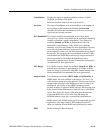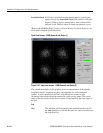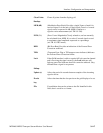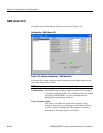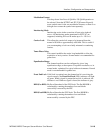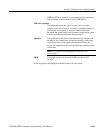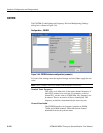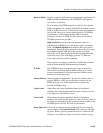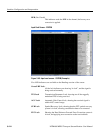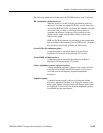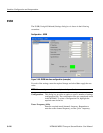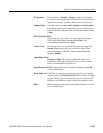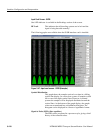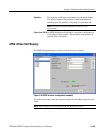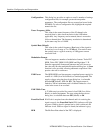
Interface Configuration and Interpretation
MTM400 MPEG Transport Stream Monitor User Manual 3-123
Receiver Mode: In order to achieve high accuracy measurements, particularly for
MER and SNR measurements, the COFDM IF card supports
two modes of operation.
For conventional COFDM reception, a relatively low ultimate
SNR is acceptable. For example at 64QAM, an ultimate receiver
SNR of 30 dB can result in a reduction in system performance of
only 0.5 dB. However, for more detailed analysis of COFDM
constellations, a much higher ultimate SNR is required,
preferably in excess of 40 dB. For this reason, two modes of
COFDM operation are provided.
High Sensitivity mode gives the full dynamic range of a
conventional COFDM receiver, but at the expense of ultimate
SNR. The High Resolution mode modifies the signal path to
dramatically reduce the noise generated in the receiver, giving a
much higher ultimate SNR, but at the expense of receiver
sensitivity. So for general purpose monitoring where the input
signal may vary over a wide range, typically -75 dBm and
lower, high sensitivity mode is preferred.
If the signal is consistently greater than -50 dB, high resolution
mode provides better RF measurement performance.
IF Filter The COFDM receiver incorporates two stages of selectivity.
One of these can be bypassed in WIDE mode to give a more
accurate representation of the input spectrum flatness (at the
expense of overall selectivity).
Stream Priority When hierarchical modulation is present, the transport stream
priority, HIGH or LOW, can be selected for analysis by the
MPEG analyzer tools. When no hierarchy is present, this
defaults to HIGH priority.
Carrier start When observing carrier amplitudes ahead of the channel
equalizer, this value sets the numerical value of the first carrier
to be displayed., and defaults to zero.
Carrier end When observing carrier amplitudes ahead of the channel
equalizer, this value sets the numerical value of the last carrier to
be displayed, and defaults to the maximum carrier number in the
COFDM signal (1704 for 2K, 6816 for 8K modes).
Front End Lock
If full lock is acquired onto the channel and it is receiving the
signal correctly, the Front End Lock (FEL) indicator will light
up green. When a signal is present but no lock is achieved, the
indicator is red. When no signal is found, the indicator is gray.



